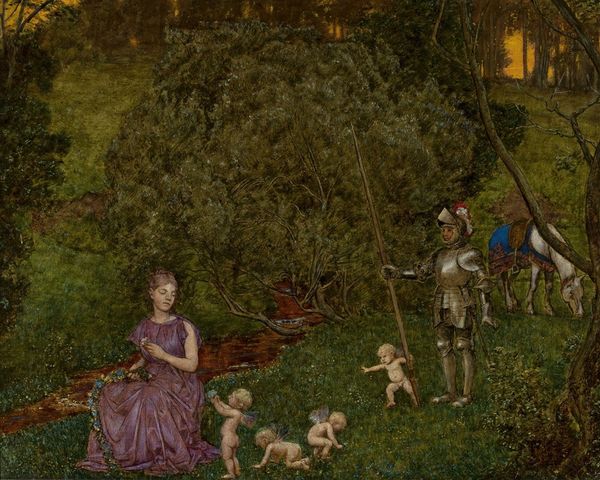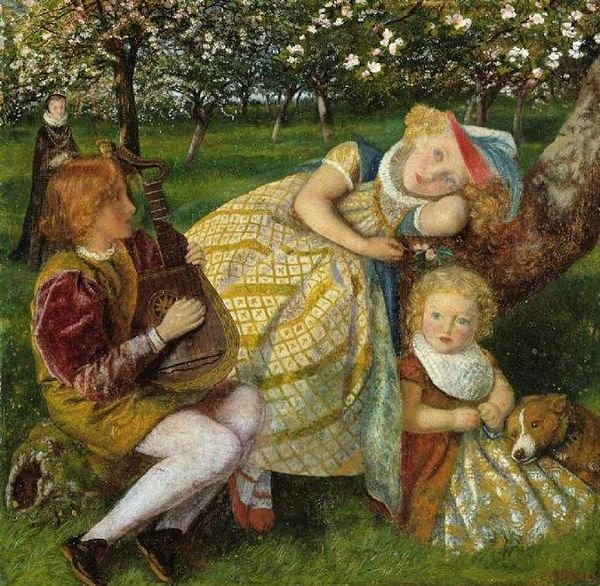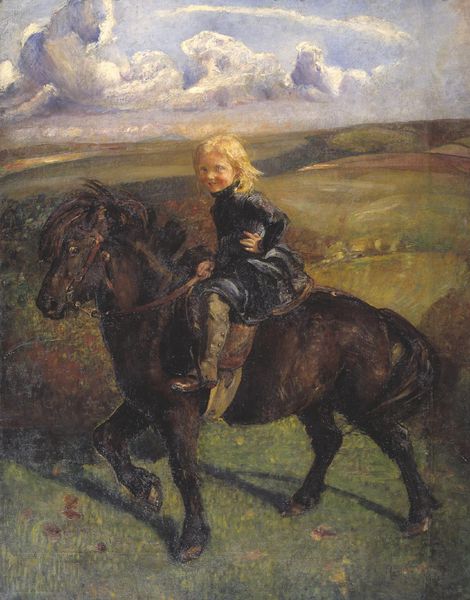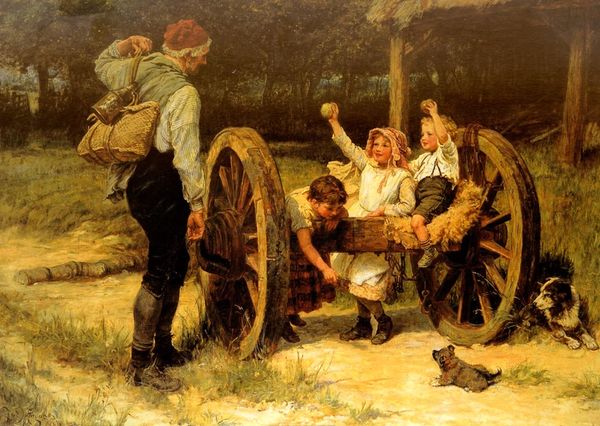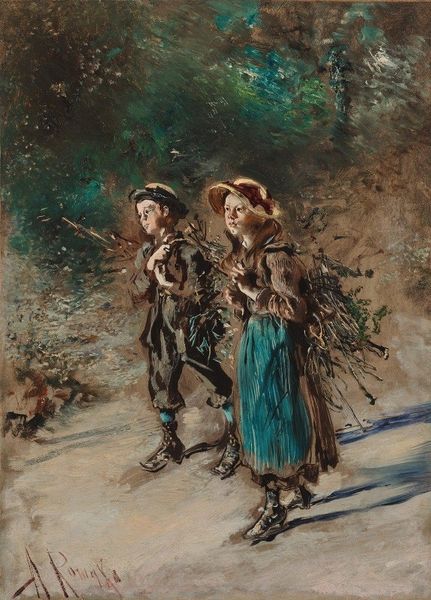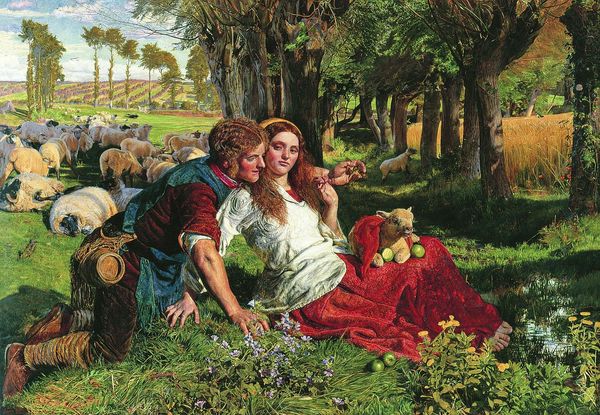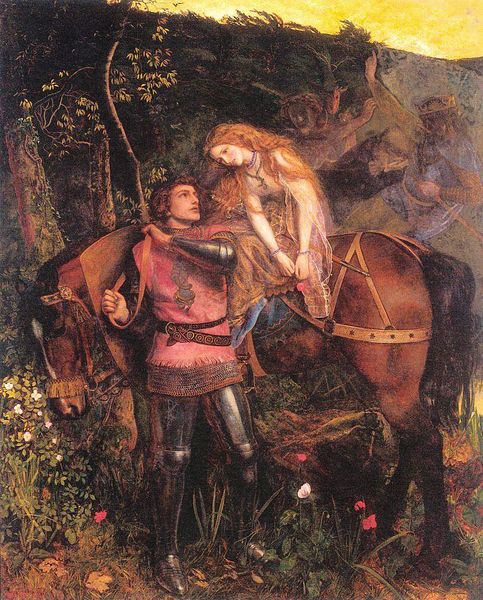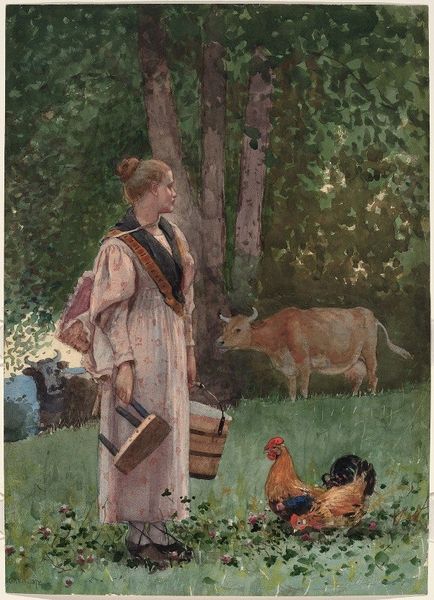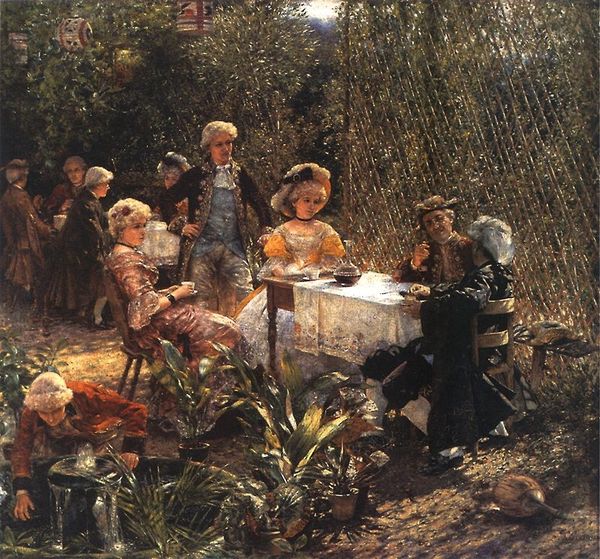
Copyright: John Lee,Fair Use
Editor: Here we have "Going to Market," an 1860 oil painting by John Lee. It has a fairytale-like quality to it. The two children and donkey in the painting have a rather dreamlike appearance against the somewhat drab backdrop of rural England. How do you interpret this work? Curator: I see in this painting a commentary on rural child labor in Victorian England. Consider the children's weary expressions and their attire. What does their clothing say about social class? Editor: Their clothes are simple and worn, indicating they’re from a lower economic class, perhaps? Curator: Exactly. Lee isn't simply depicting a pleasant genre scene. By including children performing labor, he subtly critiques the socio-economic structures that necessitated their involvement in the market economy. This was a period of great social change and industrial expansion; Lee’s Romantic style highlights the emotional and social costs behind the rise of industrial society. The slight griminess may challenge the rosy view held of "Merry Old England." Notice the girl is centered on the donkey. Does this raise a discussion point about female participation in economic activity? Editor: That's something I hadn't considered. It challenges assumptions about gender roles. Was Lee suggesting that young girls were already contributing to the market, just like men? Curator: Precisely. By subtly highlighting the work undertaken by women and children, Lee calls attention to broader economic inequalities that impacted marginalized groups in British society during the mid-19th century. Also, what do we think the chicken signifies in her arms? Editor: Thinking about how gender, work, and nature converge reveals complex themes within this piece. Curator: Indeed, art can show the connections between different aspects of the human condition. The everyday activity that the artist is depicting is tied to social criticism.
Comments
No comments
Be the first to comment and join the conversation on the ultimate creative platform.

